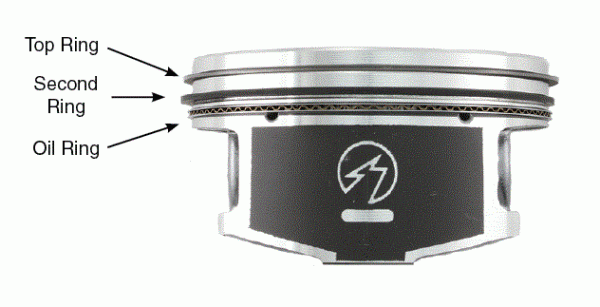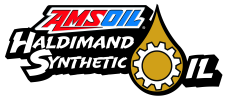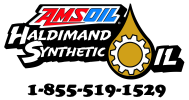How Piston Rings Work?
The Brief Answer:
Piston rings form a seal between the piston and cylinder wall, which prevents pressurized combustion gases from entering the oil sump. They also regulate oil consumption by preventing excessive oil from entering the combustion chamber and burning. Properly functioning rings are vital to maximum engine power and efficiency.

In Detail:
When it comes to engine performance, the unsung heroes are often the smallest components. Among these, piston rings play a pivotal role in maximizing efficiency and enhancing longevity. These circular metal bands, nestled between the piston and the cylinder wall, are essential for maintaining optimal compression, controlling oil consumption, and preventing blow-by. Yet, many vehicle owners overlook their significance until problems arise. In this article, we'll dive deep into the world of piston rings, uncovering their crucial functions, types, and the impact they have on your engine’s health. Whether you’re a car enthusiast or simply looking to improve your vehicle’s performance, understanding how piston rings work can lead to informed maintenance decisions and a smoother ride. Join us as we explore the details that can transform your engine’s performance and longevity—because a well-informed driver is a successful driver.
The Function of Piston Rings in an Engine
Piston rings are integral to the internal combustion engine's operation. They serve three primary functions: sealing the combustion chamber, regulating oil consumption, and transferring heat from the piston to the cylinder wall. By sealing the combustion chamber, piston rings ensure that the air-fuel mixture ignites efficiently, contributing to optimal engine performance. Proper sealing prevents the loss of combustion pressure, which is crucial for the engine's power output and fuel efficiency.
Moreover, piston rings play a vital role in controlling the amount of oil that
lubricates the cylinder walls. They scrape excess oil off the cylinder walls and return it to the sump, preventing oil from entering the combustion chamber. This regulation of oil consumption is essential for maintaining engine cleanliness and preventing the formation of carbon deposits. Properly functioning piston rings reduce the risk of oil burning, which can lead to excessive smoke emissions and engine deposits.
Heat transfer is another critical function of piston rings. During combustion, the piston absorbs a significant amount of heat. Piston rings facilitate the transfer of this heat to the cylinder walls, where it can be dissipated more effectively. This heat transfer helps prevent the piston from overheating and ensures that the engine operates within the optimal temperature range.
Types of Piston Rings and Their Applications
Piston rings come in various types, each designed for specific functions and applications. The two main categories of piston rings are compression rings and oil control rings. Compression rings are primarily responsible for sealing the combustion chamber and ensuring that the air-fuel mixture ignites properly. They are located at the top
of the piston and are subjected to high pressure and temperature. Compression rings are typically made of cast iron or steel and are designed to withstand the harsh conditions within the combustion chamber.
Oil control rings, on the other hand, are responsible for regulating the amount of oil that lubricates the cylinder walls. They are located below the compression rings and consist of multiple components, including a scraper ring and an expander ring. The scraper ring removes excess oil from the cylinder walls, while the expander ring ensures that the scraper ring maintains proper contact with the cylinder wall. Oil control rings are crucial for preventing oil from entering the combustion chamber and ensuring that the engine runs smoothly and efficiently.
In addition to compression rings and oil control rings, there are also specialized piston rings designed for specific applications. For example, some engines use gapless piston rings, which have overlapping ends that provide a
continuous seal around the piston. Gapless rings are often used in high-performance engines where maximum compression and minimal blow-by are essential. Another type of specialized piston ring is the low-tension ring, which reduces friction and improves fuel efficiency. Low-tension rings are commonly used in modern engines to meet stringent emissions and fuel economy standards. Each type of piston ring is designed to meet specific performance requirements and contribute to the overall efficiency and longevity of the engine.
How Piston Rings Affect Engine Performance
Piston rings have a significant impact on engine performance, influencing factors such as power output, fuel efficiency, and emissions. One of the primary ways piston rings affect performance is by maintaining proper compression within the combustion chamber. Compression is essential for the efficient ignition of the air-fuel mixture, which generates the power needed to drive the engine. Properly functioning piston
rings create a tight seal that prevents the loss of compression pressure, ensuring that the engine operates at peak performance.
In addition to maintaining compression, piston rings also play a crucial role in regulating oil consumption. When piston rings are in good condition, they effectively scrape excess oil off the cylinder walls and return it to the sump. This regulation of oil consumption prevents oil from entering the combustion chamber, where it could burn and create harmful emissions. By controlling oil consumption, piston rings help maintain engine cleanliness and reduce the formation of carbon deposits, which can negatively impact performance.
Furthermore, piston rings contribute to engine performance by facilitating heat transfer. The combustion process generates a significant amount of heat, which can cause the piston to expand and potentially seize if not properly managed. Piston rings help transfer heat from the piston to the cylinder walls, where it can be dissipated
more effectively. This heat transfer prevents the piston from overheating and ensures that the engine operates within the optimal temperature range. In summary, piston rings are essential for maintaining compression, regulating oil consumption, and managing heat transfer, all of which contribute to the overall performance and efficiency of the engine.
Common Issues with Piston Rings
Despite their crucial role in engine performance, piston rings can experience various issues that affect their functionality. One common problem is piston ring wear, which occurs over time due to the constant friction between the rings and the cylinder walls. Worn piston rings can lead to a loss of compression, increased oil consumption, and reduced engine performance. During combustion, the pressurized gases that drive the piston down the cylinder and turn the crankshaft can blow by the piston and travel down the cylinder wall and into the oil sump, taking horsepower and
efficiency with it. Blow by also contaminates the motor oil, reducing its performance and service life.
Another common issue with piston rings is ring sticking, which occurs when the rings become stuck in their grooves due to the buildup of carbon deposits or sludge. Stuck piston rings can prevent proper sealing and lead to a loss of compression and increased oil consumption. Blow by mentioned in the previous paragraph can also occur with ring sticking leading to contaminated motor oil, reducing its performance and service life. Regular oil changes and the use of high-quality lubricants can help prevent the buildup of carbon deposits and reduce the risk of ring sticking.
Piston ring damage can also occur due to improper installation or engine overheating. Incorrectly installed piston rings may not provide a proper seal, leading to a loss of compression and reduced engine performance. Engine overheating can cause the piston rings to expand and lose
their shape, resulting in poor sealing and increased oil consumption. It is essential to follow proper installation procedures and monitor engine temperature to prevent piston ring damage. Regular maintenance and inspections can help identify and address these common issues, ensuring that piston rings continue to perform their vital functions and contribute to overall engine performance.
Signs of Worn or Damaged Piston Rings
Recognizing the signs of worn or damaged piston rings is crucial for maintaining engine performance and preventing further damage. One of the most common symptoms of worn piston rings is excessive oil consumption. If the piston rings are no longer effectively scraping excess oil off the cylinder walls, oil can enter the combustion chamber and burn, leading to increased oil consumption and blue smoke emissions from the exhaust. Especially at startup before the engine has warmed and the rings have expanded in the cylinder. Regularly checking
oil levels and monitoring for excessive oil consumption can help identify worn piston rings.
Another sign of worn or damaged piston rings is a loss of compression, which can result in reduced engine power and poor performance. Compression loss can cause the engine to run rough, misfire, or struggle to start. A compression test can help diagnose compression issues and determine if worn piston rings are the cause. Low compression readings across multiple cylinders may indicate that the piston rings are no longer providing a proper seal.
In addition to excessive oil consumption and compression loss, other symptoms of worn or damaged piston rings include increased exhaust emissions and decreased fuel efficiency. Worn piston rings can lead to incomplete combustion and the formation of carbon deposits, which can negatively impact fuel efficiency and increase harmful emissions. Monitoring exhaust emissions and fuel economy can help identify
potential issues with piston rings. If any of these symptoms are present, it is essential to have the engine inspected by a professional mechanic to determine the condition of the piston rings and address any necessary repairs.
Maintenance Tips for Piston Rings - Prevention is best practice
Preventing worn or stuck piston rings is vital to maximizing your engine’s power, efficiency and life. One of the most important maintenance tips is to use high-quality engine oil that fights wear, withstands extreme heat, keeping pistons clean, and change it regularly. For example, AMSOIL Signature Series Synthetic Motor Oil delivers:
- 75% more engine protection against horsepower loss and wear than required by a leading industry standard*, extending the life of vital components like pistons and cams
- 93% cleaner pistons than required by a leading industry standard*

Engine oil plays a crucial role in lubricating the piston rings and preventing the buildup of carbon deposits and sludge. Regular oil changes help maintain clean and well-lubricated piston rings, reducing the risk of wear and ring sticking.
If you suspect your rings are worn or stuck, consider using the highest viscosity oil the original equipment manufacturer (OEM) recommends. Some OEMs recommend a range of viscosities, depending on your climate (e.g. 5W-20 when it’s cold, 10W-30 when it’s above 0ºF). Using the highest recommended viscosity can help close the gap between the rings and cylinder wall.
You can also try freeing stuck rings by using a quality engine flush such as AMSOIL Engine and Transmission Flush or AMSOIL P.i.® Performance Improver which is a fuel additive designed to clean deposits.
In addition to regular oil changes, it is essential to monitor the engine's operating temperature and avoid overheating. Engine overheating can cause the piston rings to expand and lose their shape, leading to poor sealing and increased oil consumption. Ensuring that the cooling system is in good working condition and addressing any issues promptly can help prevent engine overheating and protect the piston rings.
Regular engine inspections are also crucial for maintaining piston rings. During routine maintenance, mechanics should check for signs of piston ring wear, such as excessive oil
consumption, compression loss, and increased exhaust emissions. Performing compression tests and inspecting the cylinder walls for scoring or damage can help identify potential issues with the piston rings. Addressing any identified problems promptly can prevent further damage and ensure that the piston rings continue to perform their vital functions. By following these maintenance tips, vehicle owners can extend the life of their vehicle's engine pistons and rings to maintain optimal engine performance.





 Canada
Canada United States
United States